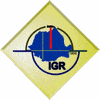Rare metal granites (RMG) and pegmatites may represent favorable hosts for several European critical raw materials and industrial minerals. These magmatic bodies may show a strong enrichment in various metals and critical raw materials (CRM) such as Li, Ta, Nb, Sn, W, Be, Cs and REEs, which are of great interest for Europe. They are also storehouses for many industrial minerals (e.g., feldspar, quartz, mica, kaolin).
Variscan orogeny in Europe produced a considerable amount of granitic intrusions and several districts of RMG, related greisens and rareelement pegmatite occurrences. In the Carpathian-Balkan area, the Variscan orogeny is illustrated mainly through occurrences of I- to S type granites and rare-element pegmatites that, however, may not be necessarily linked to specific igneous bodies. Moreover, some Permian granites in the Western Carpathian area show promising rare-metal content potential. Despite previous mining of some pegmatites for ceramic materials, the area potential for CRM is still weakly explored.
The PEGMAT project aims to: (i) identify most of the pegmatites and RMG occurrences in the Carpathian-Balkan area and assess their respective geological/structural/geochemical features; (ii) understand and characterize the geological processes and structural constraints leading to pegmatite and RMG formation; (iii) assess raw material content evolution through time and geological environment for these magmatic bodies and understand their distribution in the selected region; (iv) characterize internal processes of pegmatite formation, model pegmatite bodies and constrain their inner structure; (v) determine potential areas for prospecting regarding raw material content. An applied problem of (vi) usability parameters of CRM as well as industrial silicate materials from complex pegmatite bodies will be addressed by the applied part of the project solved by the project partners from the Czech Republic.
The work planned in the project includes (i) review of available data on pegmatite and RMG deposits; (ii) field work, detailed mapping and sampling of pegmatite and RMG bodies and their structural constrains in the host units; (iii) quantitative and genetic characterization and age dating of the main localities; (iv) assessment of bulk composition and trace elements; (v) advanced 3D modelling of selected localities; (vi) assessment of metallogenic processes; (vii) Czech team will evaluate usability of silicate and rare-element ore minerals at selected localities. All research institution partners will be involved in all tasks of the project; industrial partners from the Czech Republic will be involved especially in the usability study and field work.
